Where to dig in?
To start a garden from scratch, choose a spot with 6-8 hours of sunlight and good soil drainage. Gather essential tools like trowels, pruners, and gloves before testing your soil’s quality. Loosen compacted areas and add organic matter to improve fertility. Select plants suited to your climate zone and sunlight conditions, prioritizing easy-to-grow varieties for beginners. Establish a morning watering routine and apply mulch to retain moisture. The following steps will transform your empty space into a thriving garden.
Selecting the Perfect Garden Location and Planning Your Space
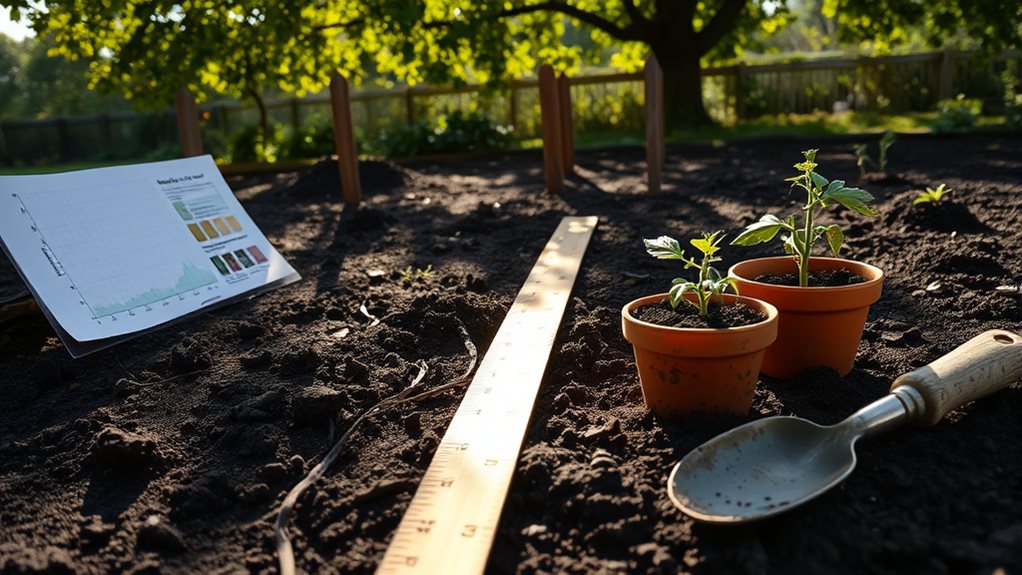
When you’re ready to start your first garden, choosing the right location lays the foundation for all your future gardening success. Look for a spot that receives 6-8 hours of full sunlight daily, as most vegetables need ample sunshine to thrive.
Check your soil by digging a small hole and examining what you find. Ideal garden soil is loamy, loose, and drains well. To guarantee your soil is suitable, collect samples from several spots and send them for testing through your local extension office.
Consider these practical factors:
- Proximity to a water source
- Easy access from your home
- Protection from strong winds
- Adequate distance from trees that might cast shade
- Avoidance of utility lines and future construction areas
If you’re limited on space, consider growing easy plants like herbs, lettuce, and mini bell peppers in containers, which offer a convenient solution for beginning gardeners.
For safety reasons, always call 811 before digging to ensure you’re not placing your garden over any underground utilities that could be dangerous if struck.
Essential Tools and Materials for the First-Time Gardener
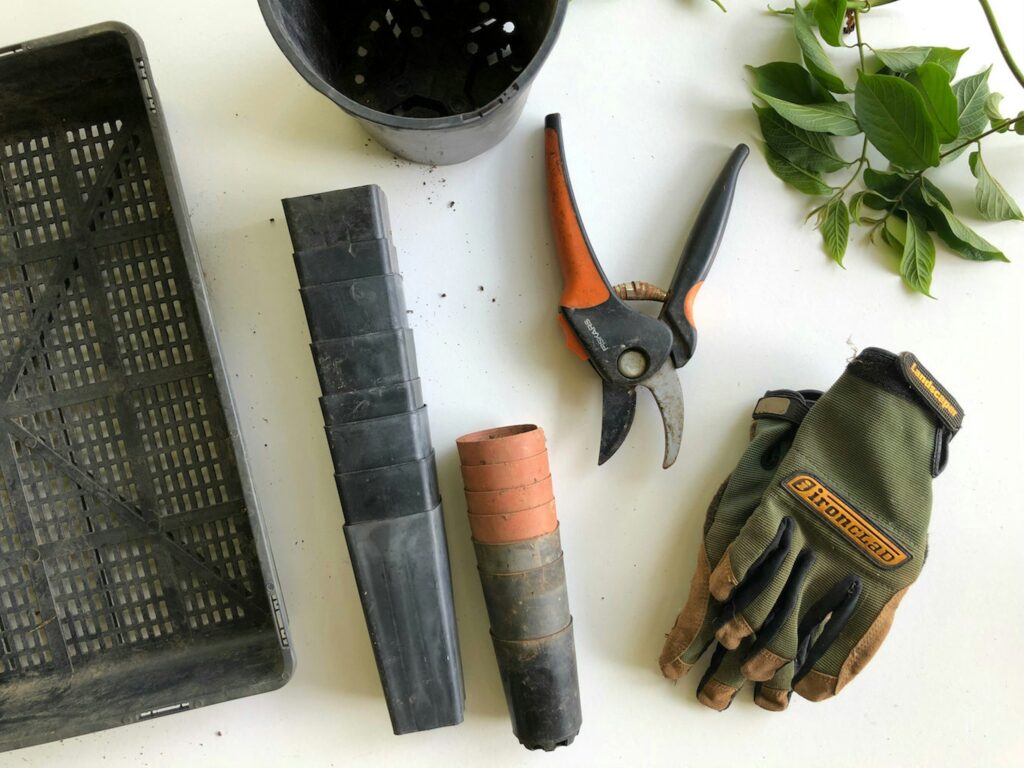
With your garden location selected, you’ll need the right tools to bring your garden to life. Start with these basic essentials:
- Hand Tools: A stainless steel hand trowel for planting, a garden fork for turning soil, and bypass pruning shears for trimming plants. Choose pruners with hardened steel blades for clean cuts that promote plant health. For professional-quality results, consider investing in Felco models that are known for exceptional durability and precision cutting.
- Protective Gear: Well-fitting gloves to protect your hands, a sun hat to shield from UV rays, and durable clothing that can handle dirt.
- Watering Equipment: A watering can or hose with an adjustable nozzle for proper plant hydration.
- Soil Care: A spade for digging larger areas and a hand rake for smoothing soil surfaces.
- Transportation: A wheelbarrow or garden cart to move soil, plants, and materials efficiently around your garden space.
Understanding Soil Quality and Preparation Techniques
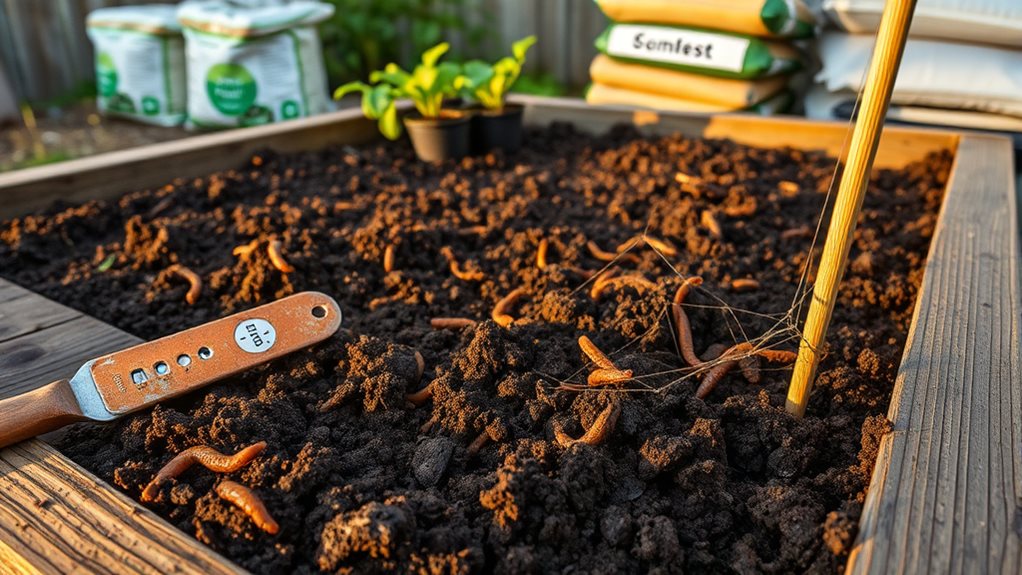
The foundation of every successful garden begins with understanding your soil’s unique characteristics. Your soil’s texture—whether sandy, silty, or clay-based—determines how well it retains water and nutrients.
Testing Your Soil
- Purchase a simple soil test kit to check pH levels (aim for 6.0-7.0 for most plants)
- Observe drainage after rain—standing water indicates poor drainage
- Check for earthworms, which signal healthy soil biology
Improving Your Garden Soil
- Add organic matter like compost or aged manure to boost structure and fertility
- Loosen compacted soil with a garden fork to improve aeration
- Consider raised beds if your native soil is particularly challenging
Creating your own backyard compost can provide nutrient-rich soil amendment through the aerobic decomposition of kitchen scraps, yard waste, and paper products.
A healthy soil ecosystem should contain at least five earthworms per section when digging up a 6-inch deep chunk, as they contribute significantly to soil aeration and nutrient cycling.
Choosing the Right Plants for Your Climate and Season
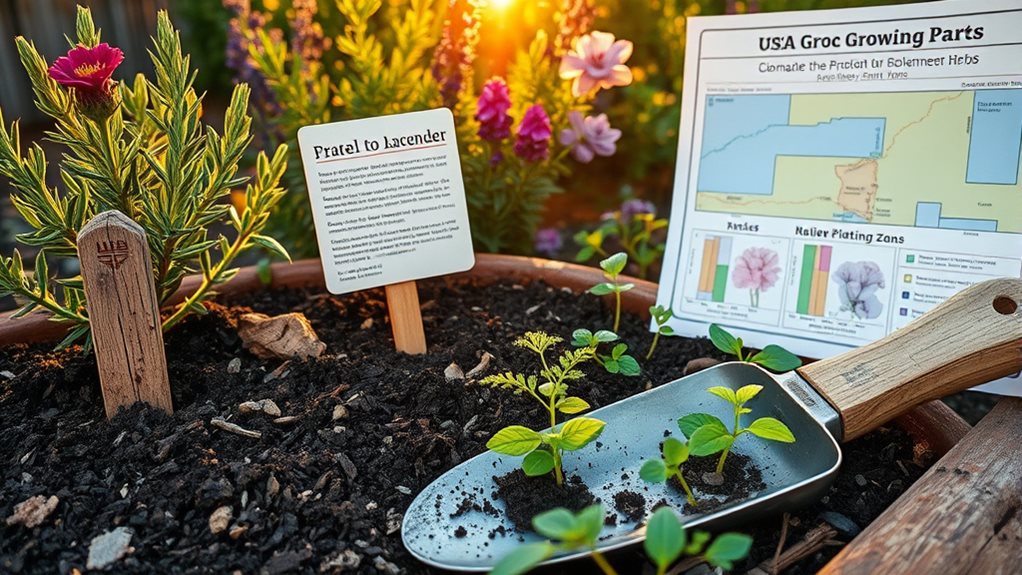
Successful gardening depends on selecting plants that will thrive in your specific environment, not just those that catch your eye at the nursery. Start by identifying your USDA Hardiness Zone, which determines which plants can survive your local temperatures.
Assess your garden’s sunlight patterns:
- Full sun (6+ hours): Choose Black-Eyed Susan or Russian Sage
- Partial shade (3-6 hours): Select adaptable perennials
- Full shade (under 3 hours): Opt for Hostas and shade-tolerant varieties
Consider your growing season’s length and plan accordingly. For beginners, focus on:
- Native plants adapted to your local conditions
- Drought-tolerant varieties that need less watering
- Low-maintenance perennials like Daylilies and Echinacea
To ensure success with vegetables, choose easy-to-grow vegetables like lettuce, green beans, radishes, and tomatoes that are more forgiving for novice gardeners.
Remember to match plants to both your climate and specific garden microclimates for the best results.
Consider sketching your garden on graph paper to visualize plant placement and ensure proper spacing for sunlight and air circulation.
Establishing Effective Watering and Maintenance Routines
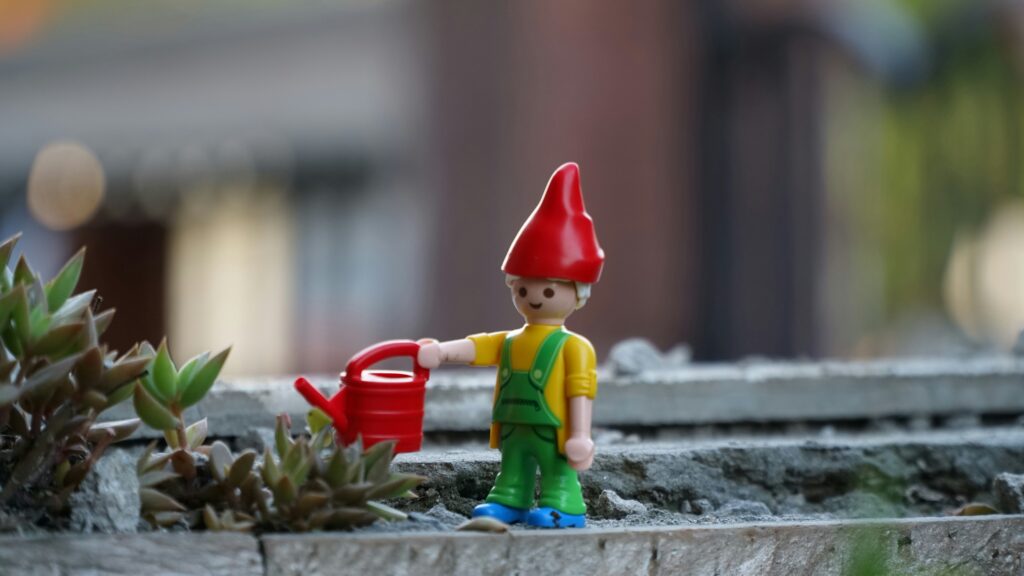
Proper watering habits form the backbone of garden success, whether you’re growing vibrant flowers or tasty vegetables. Most gardens need about one inch of water weekly, including rainfall and your supplemental watering.
How to Water Effectively
- Check soil moisture by feeling 1-2 inches below the surface, watering only when it feels dry
- Water deeply in the morning to reduce evaporation and fungal growth
- Use a rain gauge to track natural precipitation
- Apply mulch around plants to retain moisture and reduce weeds
For efficiency, consider drip irrigation which delivers water directly to roots. Investing in a quality kink-resistant hose like the Teknor Apex Zero-G can make watering your garden much easier and more reliable. Less frequent but thorough watering encourages deeper root growth and increases plant resilience. You’ll need to adjust your routine seasonally—more frequent watering during summer heat, less in cooler months. Smart irrigation systems with moisture sensors can help automate this process, saving you time and conserving water.
Frequently Asked Questions
How Do I Protect My Garden From Neighborhood Pets and Wildlife?
To protect your garden effectively:
- Install physical barriers like chicken wire or fencing, burying it 12 inches deep to prevent burrowing.
- Use netting over berries and vulnerable plants to deter birds.
- Try motion-activated sprinklers that’ll startle animals without harming them.
- Consider non-toxic repellents that make plants less appealing.
- Add garden cloches or cut plastic bottles to shield individual seedlings from curious critters.
When Should I Start Collecting Seeds From My Garden Plants?
You’ll want to collect seeds about two months after flowering, when they’ve fully matured. Look for these clear signs of readiness:
- Seedheads changing from green to brown, black, or red
- Pods beginning to dry but not yet open
- Seeds appearing plump and mature
Choose a dry day for collection to prevent spoilage. Cut seedheads with clean scissors, place them in labeled paper bags, and dry at room temperature for about a week.
Can I Garden Effectively if I Have Physical Limitations or Disabilities?
Yes, you can absolutely garden effectively with physical limitations! Try these adaptations:
- Use raised beds or containers to avoid bending
- Invest in ergonomic, lightweight tools that reduce strain
- Create wide, level paths for mobility aids
- Consider vertical gardening to minimize reaching
- Start with low-maintenance plants like lavender
Gardening offers therapeutic benefits beyond just growing plants. You’ll gain physical exercise, stress relief, and emotional well-being while adapting techniques to fit your specific needs.
How Do I Prevent Garden Diseases From Spreading Between Plants?
To prevent garden diseases from spreading:
- Clean your tools regularly with a bleach solution between plants
- Remove and dispose of infected plants immediately
- Practice proper spacing to improve air circulation
- Avoid watering foliage, target the soil instead
- Rotate your crops yearly to break disease cycles
- Use disease-resistant varieties when possible
You’ll also want to keep your garden debris-free and monitor plants regularly for early signs of trouble. Early intervention makes all the difference!
What Should I Do With My Garden When Going on Vacation?
Before leaving:
- Thoroughly weed and harvest any ripe produce
- Apply a thick layer of mulch to retain moisture
- Water plants deeply to safeguard good hydration
During absence:
- Set up self-watering devices or timers for irrigation
- Ask a neighbor to check on high-maintenance plants
- Provide clear instructions for any helpers
When you return, immediately check for pests, water as needed, and harvest any ripe vegetables to keep your garden thriving.
Conclusion
You’ve now got all the basics to start your first garden! Remember, gardening is a learning process, so don’t worry about making mistakes. Start small, observe how your plants respond, and adjust your techniques as needed. With consistent care and patience, you’ll soon enjoy the fruits of your labor. Before long, you’ll transform from a nervous novice to a confident gardener with a thriving outdoor sanctuary.

